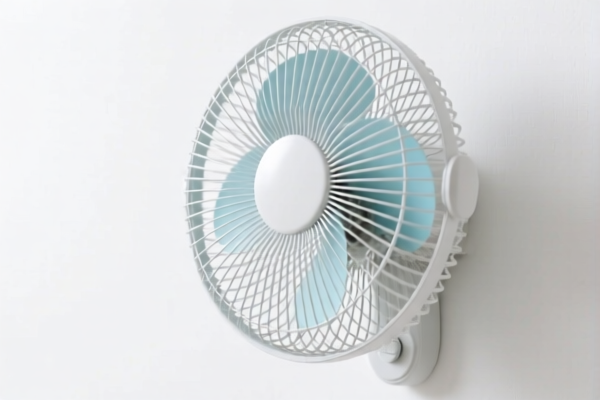| HS Code | Official Doc | Tariff Rate | Origin | Destination | Effective Date |
|---|---|---|---|---|---|
| 8415200000 | Doc | 56.4% | CN | US | 2025-05-12 |
| 8415908045 | Doc | 63.9% | CN | US | 2025-05-12 |
| 8508600000 | Doc | 55.0% | CN | US | 2025-05-12 |
| 8508700000 | Doc | 80.0% | CN | US | 2025-05-12 |
| 8543708000 | Doc | 55.0% | CN | US | 2025-05-12 |




Car Fan
A car fan, also known as an automotive fan, is a device used to provide airflow within a vehicle, typically for cooling or ventilation purposes.
Material
Car fans are constructed from a variety of materials, depending on their design and function. Common materials include:
- Plastic: Used for fan blades, housings, and structural components due to its lightweight nature and cost-effectiveness. ABS plastic is frequently employed.
- Metal: Often used for the fan motor housing, mounting brackets, and in some cases, fan blades for increased durability and heat resistance. Aluminum and steel are common choices.
- Copper: Primarily used in the windings of the fan motor due to its excellent electrical conductivity.
- Electronics: Include circuit boards, wiring, switches, and potentially control modules for more advanced fan features.
Purpose
The primary purposes of a car fan are:
- Cooling: To dissipate heat from the vehicle's engine, passengers, or electronic components.
- Ventilation: To circulate fresh air throughout the cabin and remove stale air, fog, or odors.
- Defogging/Demisting: To direct airflow onto the windshield or windows to clear condensation and improve visibility.
- Air Conditioning Support: To distribute cooled air from the air conditioning system throughout the vehicle.
Function
Car fans operate by utilizing an electric motor to rotate fan blades. These blades create airflow, which is then directed through vents and ducts to achieve the desired cooling, ventilation, or defogging effect. Fan speed is often adjustable, allowing users to control the intensity of the airflow. More sophisticated fans may incorporate features such as:
- Multiple Speed Settings: Providing varying levels of airflow.
- Oscillation: Rotating the fan head to distribute air over a wider area.
- Reverse Function: Allowing air to be drawn in from the cabin or expelled outwards.
- Automatic Operation: Utilizing sensors to adjust fan speed based on temperature or humidity levels.
Usage Scenarios
- Engine Cooling: Radiator fans prevent the engine from overheating by drawing air through the radiator.
- Cabin Comfort: Dashboard fans provide cooling and ventilation for passengers.
- Air Conditioning Systems: Blower fans circulate cooled air from the A/C evaporator to the cabin vents.
- Defrosting/Demisting: Fans direct air onto the windshield and windows to clear fog and ice.
- Electronic Component Cooling: Fans may be used to cool electronic components such as the ECU or infotainment system.
- Auxiliary Cooling: Portable 12V fans are used for supplemental cooling of passengers or pets.
Common Types
- Radiator Fans: Mounted near the radiator to cool the engine coolant. These can be mechanically driven (belt-driven) or electrically driven.
- Blower Fans: Located within the vehicle's HVAC system to circulate air through the vents. Typically electrically driven.
- Condenser Fans: Assist in cooling the air conditioning condenser.
- Engine Cooling Fans (Electric): Used in conjunction with or as a replacement for mechanical fans.
- Portable 12V Fans: Plug into the vehicle's cigarette lighter socket for auxiliary cooling.
- Axial Fans: Most common type, with blades rotating around an axis, moving air parallel to the axis.
- Centrifugal Fans: Use a rotating impeller to draw air in and expel it perpendicularly, often used for higher pressure applications.
Based on the provided information, “car fan” can be interpreted as an air conditioning machine or a part thereof used in motor vehicles, or potentially a general electrical machine. Here's a breakdown of relevant HS codes:
- 8415200000: This HS code covers “Air conditioning machines, comprising a motor-driven fan and elements for changing the temperature and humidity, including those machines in which the humidity cannot be separately regulated; parts thereof: Of a kind used for persons, in motor vehicles”. This is the most direct match if the “car fan” functions as a complete air conditioning unit for vehicle use. The tax rate details are: Basic tariff: 1.4%, Additional tariff: 25.0%, Post 2025.4.2 additional tariff: 30.0%, with a total tariff of 56.4%.
- 8415908045: This HS code covers “Air conditioning machines, comprising a motor-driven fan and elements for changing the temperature and humidity, including those machines in which the humidity cannot be separately regulated; parts thereof: Parts: Other Other: Of automotive air conditioners”. If the “car fan” is a component of an automotive air conditioning system, this code applies. The tax rate details are: Basic tariff: 1.4%, Additional tariff: 7.5%, Post 2025.4.2 additional tariff: 30.0%, with an additional 25% tariff on steel and aluminum products, resulting in a total tariff of 63.9%.
- 8543708000: This HS code covers “Electrical machines and apparatus, having individual functions, not specified or included elsewhere in this chapter; parts thereof: Other machines and apparatus: Other: Microwave amplifiers”. While less direct, if the “car fan” incorporates specific electrical components with individual functions not covered elsewhere, this code might be applicable. The tax rate details are: Basic tariff: 0.0%, Additional tariff: 25.0%, Post 2025.4.2 additional tariff: 30.0%, with a total tariff of 55.0%.
Important Note: For HS code 8415908045, please note the additional 25% tariff applicable to products made of steel or aluminum. Verification of the material composition is required for accurate tariff calculation.
Customer Reviews
No reviews yet.